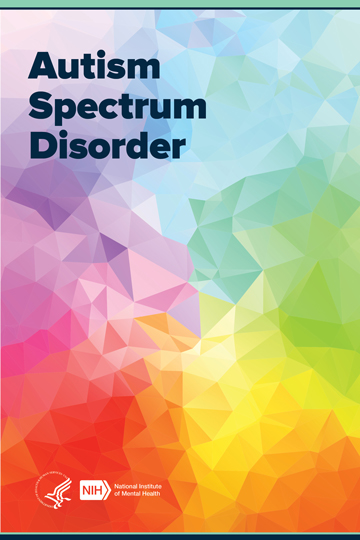Checking Out Autism: Techniques for Reliable Communication and Interaction
Efficient communication and interaction with people on the autism spectrum necessitate a comprehensive understanding of their distinct demands and choices. Techniques such as utilizing clear language, utilizing visual assistances, and cultivating consistent regimens can substantially improve involvement and minimize anxiousness. Acknowledging the significance of non-verbal signs and shared rate of interests paves the method for purposeful connections. The complexities of these approaches expose more factors to consider that merit expedition, specifically in how they can be adjusted to specific experiences and diverse contexts. What might these adaptations look like in practice?
Recognizing Autism Spectrum Condition
Autism Spectrum Condition (ASD) encompasses an array of neurodevelopmental problems identified by challenges in social communication, communication, and repeated behaviors. The term "spectrum" shows the varied indications and differing degrees of extent experienced by people with ASD. While some might display significant impairments, others might show high-functioning characteristics, enabling for better freedom in everyday life.
The start of ASD typically takes place in early childhood years, with indicators typically identifiable by age two. Very early indications might consist of delayed speech development, restricted eye call, and problems in understanding social hints. Although the exact etiology of ASD continues to be vague, research recommends a mix of environmental and hereditary aspects plays an essential function in its advancement.
As a result, interventions and support tailored to individual requirements are crucial for fostering interaction and social skills. Acknowledging the complexity of ASD is vital for promoting understanding, acceptance, and efficient strategies that help with meaningful interactions with people on the range.

Importance of Clear Interaction
Effective interaction is crucial for fostering understanding and connection, specifically for individuals with Autism Range Condition (ASD) Clear communication not only promotes social interactions however also improves the person's ability to express their thoughts, feelings, and needs. For people with ASD, the nuances of language can frequently be challenging; as a result, using simple and unambiguous language is essential.
Additionally, clear communication helps in reducing disappointment and anxiousness that may arise from misconceptions. When messages are communicated in a consistent and direct way, individuals with ASD are much better furnished to analyze information properly, which can significantly improve their social involvement and engagement in various settings.
Establishing regimens and using aesthetic assistances can better bolster clear interaction. These strategies give individuals with predictable structures that aid understanding and retention of information. Additionally, actively paying attention and being individual during interactions promotes a supportive atmosphere where individuals with ASD feel valued and understood.
Eventually, prioritizing clear communication not just encourages people with ASD but also cultivates more purposeful connections with their peers, caretakers, and the larger area, leading the way for collective partnerships and inclusive interactions. - autism
Non-Verbal Communication Strategies
Communication prolongs past words, and for people with Autism Spectrum Problem (ASD), non-verbal hints play a substantial function in interactions. Non-verbal communication techniques can consist of facial expressions, gestures, body movement, and eye contact, every one of which serve as important parts for communicating intents and emotions.
Understanding and analyzing these non-verbal signals can improve communications with people with ASD. A cozy smile or open pose can create a welcoming environment, urging interaction. Making use of aesthetic aids-- such as photo cards or symbols-- can link interaction gaps and aid share messages a lot more efficiently.
It is also crucial to be conscious of personal room, as individuals with ASD may have various comfort levels regarding proximity. Observing their responses to physical distance can educate proper changes.

Producing Supportive Environments
Producing a supportive environment is important Visit Your URL for promoting favorable interactions and boosting the well-being of people with Autism Range Problem (ASD) Such atmospheres can dramatically lower anxiousness and create a feeling of safety, enabling people to share themselves more freely.
To attain this, it is necessary to think about sensory level of sensitivities that people with ASD may experience. Changing the physical room to include soft lighting, very little background sound, and comfy seating can produce a soothing atmosphere. Additionally, making use of constant regimens and clear visual timetables can aid individuals anticipate shifts and reduce unpredictability, additional promoting comfort.
Social spaces must be structured to decrease overwhelming stimulations while providing chances for interaction in favored tasks. Facilitating areas designated for silent time can additionally serve as a refuge throughout moments of anxiety. Significantly, integrating elements of choice empowers individuals, allowing them to exercise company in their atmosphere.

Urging Social Interactions
Fostering social interactions amongst individuals with Autism Range look at this web-site Condition (ASD) requires intentional methods that focus on comfort and involvement. Developing predictable routines can help in reducing anxiety, making social settings much more approachable. Creating organized settings with specified obligations and roles permits people to engage without the frustrating stress of disorganized social dynamics.
Incorporating interests and strengths into social tasks can function as a stimulant for interaction. Arranging team tasks around shared leisure activities or subjects of fascination can help with all-natural discussions and connections. Additionally, using visual assistances, such as pictorial routines or social scripts, can aid in comprehending social signs and assumptions.
Designing suitable social habits is important - autism. Adults and peers need to demonstrate effective communication methods, including active listening and turn-taking. Role-playing situations can also supply a secure space for individuals to exercise these abilities
Finally, cultivating peer connections with comprehensive practices is crucial. Urging comprehensive playdates or team getaways can develop possibilities for socializing in a comfortable setting. By implementing these caregivers, strategies and teachers can dramatically improve social communications for people with ASD, promoting their total social growth and health.
Conclusion
To conclude, effective communication and interaction approaches are necessary for sustaining people with Autism Range Disorder. Stressing clear language, including non-verbal cues, and establishing predictable regimens substantially enhance engagement and decrease anxiousness. Producing helpful atmospheres promotes secure social communications, while motivating shared passions assists in meaningful links. Ultimately, these techniques empower people with autism to navigate social landscapes, promoting their total health and allowing the development of long lasting partnerships.
Efficient communication and communication with people on the autism range demand a thorough understanding of their unique needs and preferences. Clear communication not only helps with social interactions however likewise improves the individual's capability to reveal their ideas, feelings, and demands.Fostering social interactions among people with Autism Range Condition (ASD) needs deliberate techniques that prioritize convenience and interaction. By carrying out these strategies, educators and caretakers can considerably enhance social communications for people with ASD, promoting their overall social growth and wellness.
In conclusion, reliable interaction and interaction approaches are crucial for supporting individuals with Autism Range Condition.
 Shane West Then & Now!
Shane West Then & Now! Soleil Moon Frye Then & Now!
Soleil Moon Frye Then & Now! Richard Thomas Then & Now!
Richard Thomas Then & Now! Lucy Lawless Then & Now!
Lucy Lawless Then & Now! Tina Louise Then & Now!
Tina Louise Then & Now!